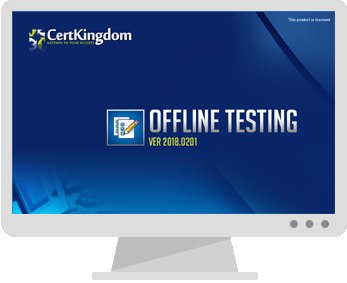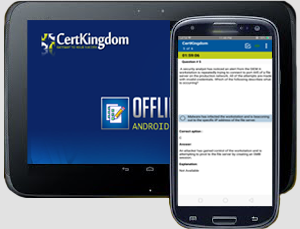Exam: OGEA-10B

|
|||||||||||||||||||||||||||
Exam Summary
Exam Name: TOGAF« Enterprise Architecture Bridge Exam
Exam Number: OGEA-10B (English)
Summary: This is the bridge path to the TOGAF Enterprise Architecture
Practitioner certification which is based on the TOGAF Standard, 10th Edition.
For more information see the TOGAF Certification Portfolio page.
Qualification upon passing: TOGAF Enterprise Architecture Practitioner
Delivered at: Authorized Examination Provider Test Centers, and via Online
Proctored
Prerequisites: TOGAF 9 Certified
Supervised: Yes
Open Book: This is a hybrid open book exam, an electronic copy of the TOGAF
Enterprise Architecture Body of Knowledge is built into the exam and becomes
available for Section 2 only. Once you start Section 2 you cannot return to
Section 1. Please note this is in English. No hardcopy books may be used at test
centers. (*)
Exam type: Simple Multiple Choice and Scenario Based, Complex Multiple Choice
Number of questions: 10 Simple Multiple Choice and 4 Scenario Based Complex
Multiple Choice
Pass score: 60% (18 out of 30 points)
Time limit: 60 minutes, split as follows: 20 minutes on Section 1, and 40
minutes on Section 2(**)
Retake policy: If you fail the test you must wait one month before another
attempt
Examination Fee: See Fees
Syllabus/Conformance Requirements: X2203
Recommended Training: An Accredited Training Course covering the conformance
requirements. See the Register of Accredited Training Courses. (****)
Next Step:
Take the exam after training with a TOGAF Accredited Training Course provider
OR
Self-study and Schedule your exam with The Open Group Exam provider
(*) The Open Group's Examination Providers operate a clean exam room
environment, so all applicable open book reference materials are provided
electronically with the examination test, accessible by selecting the Reference
button from within the exam.
(**) Additional time may be provided for people taking an English language exam
for whom English is not their first language. Please see https://certification.opengroup.org/ESL
for more information.
(***) All Accredited Training Courses include the examination as part of the
course fee. A voucher is provided to take the exam at The Open Group Examination
Provider's test center. Local taxes may apply.
(****) To prepare for a certification exam, The Open Group recommends TOGAF
training prior to taking the exam. Please note that we do not claim that by
taking courses you are guaranteed to pass the certification exams, however we do
state that training is an important component in certification preparation.
OGEA-10B Brain Dumps Exam + Online / Offline and Android Testing Engine & 4500+ other exams included
$50 - $25 (you save $25)
Buy Now
QUESTION 1
What is presented as striking a balance between positive and negative outcomes
resulting from the realization of either opportunities or threats?
A. Agile development
B. Architecture Security
C. Transition Management
D. Risk Management
Answer: D
Explanation:
Risk Management is the process of identifying, assessing, and responding to
risks that may affect the
achievement of the enterprises objectives. Risk Management involves balancing
positive and
negative outcomes resulting from the realization of either opportunities or
threats. Reference: The
TOGAF® Standard | The Open Group Website, Section 3.3.3 Risk Management.
QUESTION 2
Which of the following are the four purposes that typically frame the planning
horizon, depth and
breadth of an Architecture Project, and the contents of the EA Repository-?
A. General Foundational Subordinate and Superior Architecture
B. Segment, Capability. Enterprise and End-to-end Target Architecture
C. Avant-Garde Big-Bang, Discreet and Cohesive
D. Strategy Portfolio Project Solution Delivery
Answer: D
Explanation:
Strategy Portfolio Project Solution Delivery are the four purposes that
typically frame the planning
horizon, depth and breadth of an Architecture Project, and the contents of the
EA Repository. They
correspond to different levels of abstraction and granularity in the
architecture development process.
Reference: The TOGAF® Standard, Version 9.2 - The Open Group, Section 2.4
Architecture Repository.
QUESTION 3
Complete the sentence Business Transformation Readiness Assessment
is_________________.
A. a joint effort between corporate staff lines of business and IT planners
B. to ensure the active support of powerful stakeholders
C. a way to put building blocks into context thereby supporting re-usable
solutions
D. widely used to validate an architecture that is being developed
Answer: A
Explanation:
Business Transformation Readiness Assessment is a joint effort between corporate
staff lines of
business and IT planners to evaluate the readiness of the organization to
undergo change. It involves
assessing factors such as vision, commitment, capacity, capability, culture, and
motivation that may
influence the success of a business transformation initiative. Reference: The
TOGAF® Standard | The
Open Group Website, Section 3.3.2 Business Transformation Readiness Assessment.
QUESTION 4
Complete the following sentence. In the ADM documents which are under
development and have not undergone any formal review and approval process
are_______________.
A. Called śdraft
B. Invalid
C. In between phases
D. Known as śVersion 0.1
Answer: A
Explanation:
In the ADM documents which are under development and have not undergone any
formal review
and approval process are called oedraft . This indicates that they are subject
to change and refinement
as the architecture development progresses. Reference: The TOGAF® Standard |
The Open Group
Website, Section 4.2.5 Architecture Deliverables.
QUESTION 5
Complete the sentence The TOGAF standard covers the development of four
architecture domains.
Business. Data, Technology and__________________.
A. Segment
B. Transition
C. Capability
D. Application
Answer: D
Explanation:
The TOGAF standard covers the development of four architecture domains:
Business, Data,
Technology and Application. These domains represent different aspects of an
enterprises
architecture and provide a consistent way of describing, analyzing, and
designing them. Reference:
The TOGAF® Standard | The Open Group Website, Section 2.2 Architecture
Development Method (ADM).
QUESTION 6
Which of the following are interests important to the stakeholders in a system?
A. Requirements
B. Principles
C. Concerns
D. Architecture views
Answer: C
Explanation:
Concerns are interests important to the stakeholders in a system. They are used
to identify and
classify the systems stakeholders and to guide the selection of viewpoints for
the architecture
description. Reference: The TOGAF® Standard | The Open Group Website, Section 3.2.1 Architecture
Viewpoints
logged members Can Post comments / review and take part in Discussion
Certkingdom Offline Testing Engine Simulator Download
Prepare with yourself how CertKingdom Offline Exam Simulator it is designed specifically for any exam preparation. It allows you to create, edit, and take practice tests in an environment very similar to an actual exam.
Supported Platforms: Windows-7 64bit or later - EULA | How to Install?
FAQ's: Windows-8 / Windows 10 if you face any issue kinldy uninstall and reinstall the Simulator again.
Download Offline Simulator-Beta
Certkingdom Testing Engine Features
- Certkingdom Testing Engine simulates the real exam environment.
- Interactive Testing Engine Included
- Live Web App Testing Engine
- Offline Downloadable Desktop App Testing Engine
- Testing Engine App for Android
- Testing Engine App for iPhone
- Testing Engine App for iPad
- Working with the Certkingdom Testing Engine is just like taking the real tests, except we also give you the correct answers.
- More importantly, we also give you detailed explanations to ensure you fully understand how and why the answers are correct.
Certkingdom Android Testing Engine Simulator Download
Take your learning mobile android device with all the features as desktop offline testing engine. All android devices are supported.
Supported Platforms: All Android OS EULA
Install the Android Testing Engine from google play store and download the app.ck from certkingdom website android testing engine download

Certkingdom Android Testing Engine Features
- CertKingdom Offline Android Testing Engine
- Make sure to enable Root check in Playstore
- Live Realistic practice tests
- Live Virtual test environment
- Live Practice test environment
- Mark unanswered Q&A
- Free Updates
- Save your tests results
- Re-examine the unanswered Q & A
- Make your own test scenario (settings)
- Just like the real tests: multiple choice questions
- Updated regularly, always current




